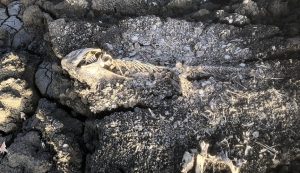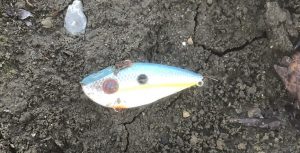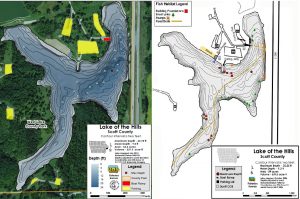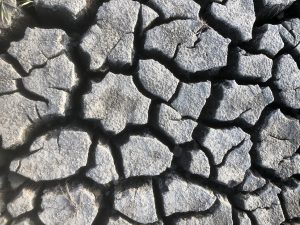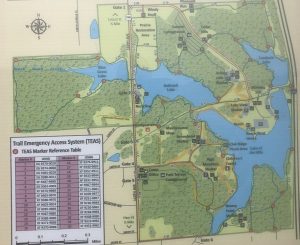262 bass in 2019 represented an increase from 216 in 2018. Nearly all came from the regular regional haunts with the exception of a pair that took a nine hour drive to hook. Today’s post takes a general look at where those fish call home. Lots of potholes that lie off the beaten path are involved so I don’t mind revealing that many bass were caught in places like 2×4 Lake, Bearclaw Lake, Hopper Lake, Dark Lake or Turkey Lake. A couple of those are public knowledge, another pair I named myself and one is on private ground. More power to you if you can recognize them, find them or even get to them. Indeed, a little mystery is all part of the fun of fishing.
Grand Totals
Bass = 262
Bodies of water = 30
Comments: Once again a big batch of little waters produced the vast majority of my bass. Those small waters consisted of the standard collection of public and private Knox County strip mine waters, many that I have been fishing since the 1980s. The largest lake I fished was Lost Grove Lake in Scott County, Iowa which comes in at about 400 acres and I also put in quite a few hours on good old Lake Storey just north of Galesburg, Illinois which comes in at 133 acres.
Access
Bank Bass (Northerner boots, biking and hiking) = 92 bass
Little Boat Bass (near 40 year old 8’ johnboat) = 113 bass
Big Boat Bass (1987 Bass Tracker Pro 17) = 57 bass
Comments: I have put far more miles on pairs of boots and sets of oars than I have ever racked up on trolling motors or outboards. 2019 was no exception although I took advantage of the “big boat” for several outings. Hauling the little boat off the beaten path boosted the boat totals but both approaches were quite successful.
The Waters (from least to most caught)
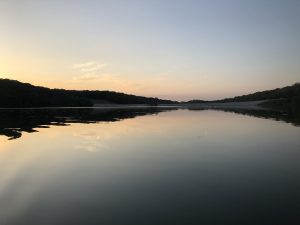
Lake George – a scenic shutout
Lake George – Rock Island County (1 visit on 8/4)
0 bass
1.50 hours
Comments: I’d fished Lake George back in 1997 and 2000, making the roughly one hour drive from my then residence in Galesburg, IL. Nowadays, in the Quad Cities I can cover the route in about half the time so I decided to check it out again. The brief visit resulted in a dog day shutout but looked appealing. If I elect to try it again, I will likely borrow Dad’s boat for better maneuverability and a depthfinder.
Lost Grove lone catch
Lost Grove Lake – Scott County, IA (1 visit on 6/2)
1 bass
2.25 hours
0.44 bass/hour
Top 5 Weight: no qualifying bass at 12” or better
Comments: A regular stomping ground over the river fell by the wayside this year. Too much rain in the spring really muddied things up in the area that I target, making it not worth my while. I did venture to a clearer area but like Lake George, a bigger boat with a depthfinder would be the ticket.
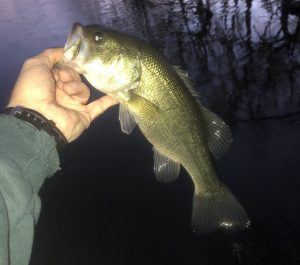
Sunflower State Bass
Sedgwick County Park – Wichita, KS (2 visits, 2 lakes, 11/19 & 11/21)
2 bass
2.50 hours
0.80 bass/hour
Top Bass: 1-9 (15”) Spinnerbait
Top 5 Weight (only 2 at 12” or >): 2-11 (1-9,1-2)
Comments: A couple work trip bonus bass allowed me to achieve the annual goal of a November catch after I’d abandoned the local pursuit due to weather and schedule conflicts. Felt pretty proud of myself in landing a pair of decent bass with only internet research used to select a destination.
First cast pond bass
Henry County Private Pond (1 visit on 4/19)
5 bass
1.25 hours
4.00 bass/hour
Top Bass: 0-14 (12.5”) Chatterbait
Top 5 Weight (only 2 at 12” or >): 1-10 (0-14,0-12)
Comments: Desperate to get in some casts with a limited April evening window I turned to a nearby pothole and got my fix. Nothing big here but hits the spot for an annual spring visit when pressed for time.
Lake Storey catch
Lake Storey – Knox County, IL (5 visits – 7/26 through 10/19)
32 bass
24.00 hours
1.33 bass/hour
Top Bass: 2-2 (16.5”) Zoom Baby Brush Hog
Top 5 Weight: 9-0 (2-2,1-3,1-12,1-11,1-10)
Comments: Still enjoy getting on my “home’ water especially since I’m no longer a local. I can’t just hop out there for a visit, takes a little more time and work. Five visits with three different partners and got outfished by my brother and one of my boys along the way. Overall, a good bass/hour rate for me on a tough lake and while no trophies, those bass continue to be fit and feisty.
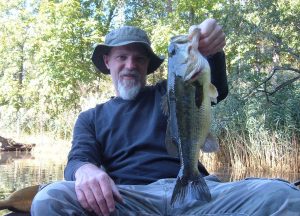
Little John Conservation Club catch
Knox County, IL Private Strip Mines (9 visits, 5 lakes, 1/5 through 10/14)
85 bass
33.75 hours
2.52 bass/hour
Top Bass: 3-14 (20”) Senko wacky rig
Top 5 Weight: 13-9 (3-14,2-11,2-9,2-4,2-3)
Comments: Several old fishing holes continue to produce bites and one of them gave up my Top Bass for the year. However, other quality bites just never materialized. Still exciting to fish these spots over 30 years after making my first casts as the big fish potential remains. Just couldn’t get any of them to make a mistake in 2019.
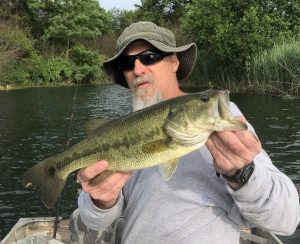
Knox County, IL public strip pit bass
Knox County, IL Public Strip Mines (7 visits, 19 lakes, 4/1 through 10/14)
137 bass
27.75 hours
4.94 bass/hour
Top Bass: 2-10 (16.5”) Jig
Top 5 Weight: 11-10 (2-10,2-8,2-4,2-3,2-0)
Comments: While I admit that my walk-in strip mine areas do wear me out a bit more these days, I’m not ready to give up quite yet. Sounds like a broken record as I couldn’t fool anything real big did witness my brother nabbing a good one. I know that they are there and I am looking forward to tromping around again in 2020 to try and find them.
Knowing where to find some bass is only part of the equation. It is also necessary to find out what can fool ‘em. That aspect comes up in the next post. Talk to you later. Troy





